Dallas (214) 340-8885
Athens (903) 677-9090
Gun Barrel City (903) 887-4341
Dallas (214) 340-8885
Athens (903) 677-9090
Gun Barrel City (903) 887-4341

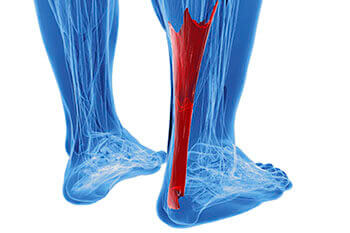 The Achilles tendon is the strongest tendon in the human body. Its purpose is to connect the lower leg muscles and calf to the heel of the foot. This tendon is responsible for facilitating all types of movement, like walking and running. Since this tendon provides an enormous amount of mobility to an individual, any injuries inflicted to this tissue should be immediately brought up with a physician to prevent further damage.
The Achilles tendon is the strongest tendon in the human body. Its purpose is to connect the lower leg muscles and calf to the heel of the foot. This tendon is responsible for facilitating all types of movement, like walking and running. Since this tendon provides an enormous amount of mobility to an individual, any injuries inflicted to this tissue should be immediately brought up with a physician to prevent further damage.
The most common injuries that can trouble the Achilles tendon are tendon ruptures and Achilles tendinitis. Achilles tendinitis is the milder of the two injuries and can be recognized by the following symptoms: inflammation, dull to severe pain, an increased flow of blood to the tendon, thickening of the tendon, and slower movement time. Tendinitis can be treated via several methods and is often diagnosed by an MRI.
An Achilles tendon rupture is trickier to heal, and is by far the most painful injury. It is caused by the tendon ripping or completely snapping. The results are immediate and absolutely devastating, and will render the patient immobile. If a rupture or tear occurs, operative and non-operative methods are available. Once the treatment begins, depending on the severity of the injury, recovery time for these types of issues can take up to a year.
Simple preventative measures can be taken as a means to avoid both injuries. Prior to any movement, taking a few minutes to stretch out the tendon is a great way to stimulate the tissue. Calf raises, squats, leg curls, leg extensions, leg raises, lunges, and leg presses are all suggested ways to help strengthen the lower legs and promote Achilles tendon health.
Many problems arise among athletes and people who overexert themselves while exercising or who do not properly warm up before beginning an activity. Proper, comfortable shoes that fit correctly can also decrease tendon injuries. Some professionals also suggest that when exercising, you should make sure that the floor you are on is cushioned or has a mat, as this will relieve pressure on the heels. As always, a healthy diet will also increase tendon health.
It is very important to seek out a podiatrist if you believe you have an injury in the Achilles region, because further damage could result in severe complications that would make being mobile difficult, if not impossible.
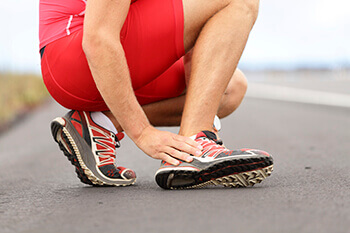 Pain experienced in the ankle can be caused by a multitude of conditions. While the most common cause is an ankle sprain, other possible problems can include arthritis, gout, ankle instability, ankle fracture, nerve compression, or tendinitis. In more serious cases, ankle pain can be a sign of improper alignment of the foot or an infection.
Pain experienced in the ankle can be caused by a multitude of conditions. While the most common cause is an ankle sprain, other possible problems can include arthritis, gout, ankle instability, ankle fracture, nerve compression, or tendinitis. In more serious cases, ankle pain can be a sign of improper alignment of the foot or an infection.
Ankle pain can often be accompanied by symptoms such as redness, swelling, stiffness and warm in the affected area. Pain can be described differently depending on the condition; short, stabbing pain and a dull ache are some examples. If such symptoms are persistent and do not improve after time, be sure to schedule an appointment with your local podiatrist.
Depending on the condition behind your ankle pain, different treatments may be prescribed by your podiatrist. For ankle sprains, the first step in treatment involves rest, ice, elevation, and compression. Be sure to avoid placing pressure on the ankle, use an ice pack several times a day, and use a compression bandage and elevation to reduce swelling. Other more serious conditions may require the assistance of certain drugs and medications such as nonsteroidal anti-inflammatory drugs (NSAIDs), physical therapy, or even cortisone injections.
Consult with your foot and ankle doctor to best determine the cause of your ankle pain and the appropriate treatment. Depending on the severity of your ankle pain and the condition behind it, recovery from ankle pain may take some time.
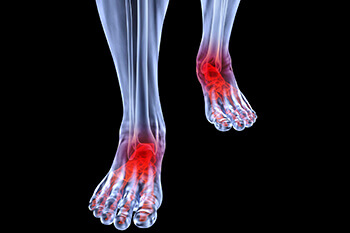 During your lifetime, you will probably walk about 75,000 miles, which is quite a lot of stress to put on your feet. As you get older, the 26 bones and 30 joints in your body will lose flexibility and elasticity, and your foot’s natural shock absorbers will wear down too. Having arthritis in addition to life’s wear and tear only makes matters worse; the joints will become distorted and inflamed, making arthritic foot care an important thing to consider for your overall health.
During your lifetime, you will probably walk about 75,000 miles, which is quite a lot of stress to put on your feet. As you get older, the 26 bones and 30 joints in your body will lose flexibility and elasticity, and your foot’s natural shock absorbers will wear down too. Having arthritis in addition to life’s wear and tear only makes matters worse; the joints will become distorted and inflamed, making arthritic foot care an important thing to consider for your overall health.
When dealing with arthritis, having additional foot complications—such as bunions, hammertoes, or neuromas—may be a serious detriment. To avoid these, buying well-fitting shoes with a lower heel and good support is a must. Having shoes with good arch support is highly recommended.
Aside from getting good arch support, the shoes need to fit comfortably and properly as well. A good place to start is by leaving a finger width between the back of the shoe and your foot to gauge proper size. It is also helpful to have a square or rounded toe box in the front to provide even more comfort. Another thing to look for is a rubber sole that can provide a cushion and absorb shock as you walk. This adds flexibility to the ball of your foot when you push off your heel to walk.
Exercise is another key aspect of arthritic foot care, as it not only strengthens and stretches the muscles and joints but helps prevent further injury and pain as well. Certain non-steroid, non-inflammatory drugs or topical medicines may be recommended by your podiatrist to help ease arthritic pain. Be sure to visit your podiatrist to determine what method of care is best for you.
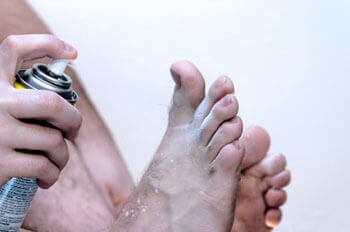 Athlete’s foot is an extremely contagious infection caused by a fungus that results in itching, burning, dry, and flaking feet. The fungus that causes Athlete’s foot is known as tinea pedis and thrives in moist, dark areas such as shower floors, gyms, socks and shoes, commons areas, public changing areas, bathrooms, dormitory style houses, locker rooms, and public swimming pools. Athlete’s foot is difficult to treat as well because of the highly contagious and recurrent nature of the fungus.
Athlete’s foot is an extremely contagious infection caused by a fungus that results in itching, burning, dry, and flaking feet. The fungus that causes Athlete’s foot is known as tinea pedis and thrives in moist, dark areas such as shower floors, gyms, socks and shoes, commons areas, public changing areas, bathrooms, dormitory style houses, locker rooms, and public swimming pools. Athlete’s foot is difficult to treat as well because of the highly contagious and recurrent nature of the fungus.
Athlete’s foot is spread by direct contact with an infected body part, contaminated clothing, or by touching other objects and body parts that have been exposed to the fungus. Because the feet are an ideal place for tinea to grow, thrive, and spread, this is the most commonly affected area, but it is known to grow in other areas.
The most commonly infected body parts are the hands, groin, and scalp, as well as obviously the feet. Around 70% of the population suffer from tinea infections at some point in their lives, however not all of these cases are Athlete’s foot. Just like any other ailment, some people are more likely to get it than others; such as people with a history of tinea infections or other skin infections, both recurring and non-recurring ones. On top of this, the extent to which a person experiences regrowth and recurrent tinea infections varies from person to person.
Sometimes people will not even know that have Athlete’s foot because of a lack of symptoms. However, most people experience mild to moderate flaking, itching, redness, and burning. Some of the more severe symptoms include cracking and bleeding skin, intense itching and burning, pain while walking or standing, and even blistering.
Because of the recurring nature of tinea fungus and the Athlete’s foot it causes, the best way to treat this condition is with prevention. While it is hard to completely avoid, you can take some preventative measures such as wearing flip flops or sandals in locker rooms and public showers to reduce contact with the floor. It is important to keep the feet clean and dry, which will allow them to air out and breathe. If you suspect you have Athlete’s foot, immediately visit your local podiatrist to determine what treatment is best for you.
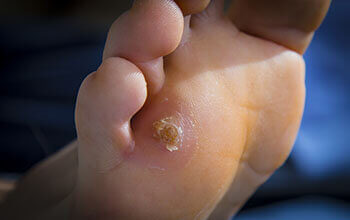 Corns are thickened areas on the skin’s surface, to the point of being irritating and sometimes painful. Commonly found on the feet, corns are circular or cone-shaped and develop where there are areas of pressure or friction, such as on the little toe when it rubs up against shoes or on the ball of your foot.
Corns are thickened areas on the skin’s surface, to the point of being irritating and sometimes painful. Commonly found on the feet, corns are circular or cone-shaped and develop where there are areas of pressure or friction, such as on the little toe when it rubs up against shoes or on the ball of your foot.
Corns are often confused with a callus, but there is a difference between them. Corns can be raised bumps that are painful to the touch. They consist of a rough, thick area of skin that may be dry or waxy. Corns tend to be surrounded by skin that is inflamed, and are usually much smaller than calluses.
The best treatment for a corn varies from person to person and is best determined by a podiatrist. Certain topical over-the-counter products may be suggested, or a more serious treatment may be prescribed. Diabetics should consult with a podiatrist immediately if they have developed a corn, as small wounds such as corns can develop into more serious conditions.
Orthotic inserts, which are fitted by a podiatrist, may also help with treating corns. Inserts fit right into the shoes and adjust the way the feet fit into the shoes, thus fixing the way one walks. Proper-fitting orthotics can help reduce friction, which can in turn help reduce corn formation and exacerbation.
Surgery is rarely used to treat corns, but does occur on occasion. Corn surgery actually deals with the underlying issue that causes corns. During surgery, the bone is shaved and any abnormalities are corrected, thus reducing the amount of friction that occurs during walking.
To prevent corns, the first step is reducing friction. Always wear shoes that fit well and don’t rub the feet. Wearing cushioned insoles in your shoes can also reduce friction. While there are many ways to prevent corns, it is best to consult a podiatrist with any questions you may have.
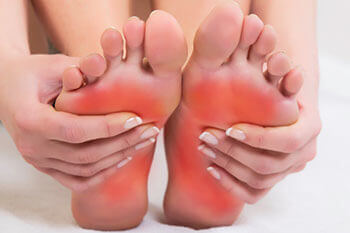 The feet, being the foundation of the body, carry all of the body’s weight and are therefore prone to experiencing pain and discomfort. If you are experiencing foot pain, it is important to determine where in the foot you are experiencing this pain to help discover the cause of it. While pain can be experienced virtually anywhere in the foot, the most common sites of foot pain are in the heel and ankle.
The feet, being the foundation of the body, carry all of the body’s weight and are therefore prone to experiencing pain and discomfort. If you are experiencing foot pain, it is important to determine where in the foot you are experiencing this pain to help discover the cause of it. While pain can be experienced virtually anywhere in the foot, the most common sites of foot pain are in the heel and ankle.
Heel pain can be due to a multitude of conditions including plantar fasciitis, Achilles tendinitis, and heel spurs. Pain experienced in the ankle can be a sign of an ankle sprain, arthritis, gout, ankle instability, ankle fracture, or nerve compression. In more serious cases, pain the foot can be a sign of improper alignment or an infection.
Foot pain can be accompanied by symptoms including redness, swelling, stiffness and warmth in the affected area. Whether the pain can be described as sharp or dull depends on the foot condition behind it. It is important to visit your local podiatrist if your foot pain and its accompanying symptoms persist and do not improve over time.
Depending on the location and condition of your foot pain, your podiatrist may prescribe certain treatments. These treatments can include but are not limited to prescription or over-the-counter drugs and medications, certain medications, cortisone injections, or surgery.
If you are experiencing persistent foot pain, it is important to consult with your foot and ankle doctor to determine the cause and location. He or she will then prescribe the best treatment for you. While milder cases of foot pain may respond well to rest and at-home treatments, more serious cases may take some time to fully recover.
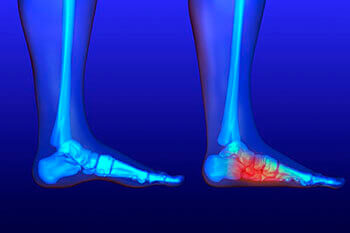 Flat feet is a condition in which the arch of the foot is depressed, generally making the sole of the foot completely or almost completely stay in contact with the ground. About 20-30% of the population generally has flat feet because their arch never formed during growth.
Flat feet is a condition in which the arch of the foot is depressed, generally making the sole of the foot completely or almost completely stay in contact with the ground. About 20-30% of the population generally has flat feet because their arch never formed during growth.
Having flat feet can sometimes make it difficult to walk due to the stress it places on the ankles. The general alignment of your legs is thrown off because the ankles move more inward which can cause some major discomfort. This also has a big effect on the knees as many people that have flat feet often have arthritis in that area. However, in many cases, having flat feet do not cause any pain and it should not be a cause for concern in that case.
For those that run, there are specific shoes to help realign the ankles with a lot more support and less pronation. The weight shifting in this activity is very quick, so that's why it's important to know if you have flat feet early on in your life, in case of injury down the road.
Symptoms of flat feet can include: pain around the heel or arch area, trouble standing on the tip toe, swelling around the inside of the ankle, flat look to one or both feet, and having your shoes feel uneven when worn. A major cause of flat feet is never having developed an arch on your foot. Overtime, a lot of stress and trauma to the foot can actually weaken the posterior tibial tendon that runs around the inside of the ankle. This is the reason why some people with flat feet have pain around that particular area.
There are a number of ways to help treat flat feet. One way is going barefoot. Studies have shown that those that grew up going barefoot or wearing less closed-toe shoes actually have more of an arch because the general strength and fullness of the arch increased. Also, those with flat feet have a weaker Achilles tendon, and exercise to the area will help stretch the area. In a lot of cases, there are great shoe inserts provided by orthopedists to provide ankle support as well as reduce the symptoms that go along with severe flat feet. For those that suffer severe pain in that area, tendon surgery is an option to help with any posterior tibial tears.
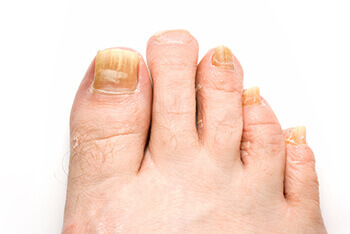 HyperBlue Laser
HyperBlue Laser
Laser surgery in podiatry is used to treat conditions such as warts, ingrown nails, infected or fungal nails, and various other skin conditions of the foot. Many patients opt for lager surgery as opposed to something that is more invasive to avoid the side effects that can often result from using a scalpel. The HyperBlue laser is one such system.
The light from the laser vaporizes the tissues that are affected with the condition nearly immediately. Lasers also have the added benefit of being accurate and precise. Aside from destroying the affected tissue, the laser also sterilizes and stops bleeding in the surrounding areas. Recovery after laser surgery is typically faster, with the patient having to suffer less pain and discomfort.
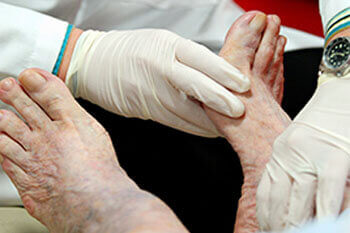 While proper foot care is important for everybody, senior citizens have the tendency to be more susceptible to certain conditions and should therefore be well informed about problems that may arise and what they can do to properly avoid or treat them.
While proper foot care is important for everybody, senior citizens have the tendency to be more susceptible to certain conditions and should therefore be well informed about problems that may arise and what they can do to properly avoid or treat them.
Some of the most common problems are foot ulcers, ingrown toenails, fallen arches, and fungal infection. A foot ulcer is an open sore on the foot and can be a result of decreased sensation in the feet. An ingrown toenail is defined as when the nail grows into the side of the toe. Fallen arches are indicated by the instep of the foot collapsing. A fungal infection is a condition that results in deformed and discolored toenails.
In order to avoid these conditions it is recommended that the feet be inspected by the patient on a regular basis. If these inspections are carried out routinely, there is a good likelihood that problems can be identified before they become severe, or can even be avoided altogether. If any abnormality is discovered, it is important that the individual consult a doctor for diagnosis and information on treatment options.
Proper foot hygiene is also important. Making sure that you always have clean, dry socks on can be a major deterrent to many different problems including bacterial infections, foot odor, and certain types of fungus. Wet feet are a major cause of many of these problems. If your socks get wet, it is important to change them. Walking around in wet socks may not only lead to various infections, but can irritate the skin and result in a number of various complications. Clean, dry feet are less likely to be affected by fungal and other infections.
As people age, the fat present on your feet begins to deteriorate. The protective nature of this fat keeps the feet healthy by providing a barrier and between your bones and the ground as well as giving the skin on the foot a certain amount of elasticity. This is one factor that causes elderly people to develop some serious foot issues. Foot moisturizers can be helpful to avoid certain problems associated with this.
However, water-based moisturizers do not work as well for elderly people as they do for the young. Instead, it is more effective to use an emollient instead. An emollient is effective because it binds the water in the foot, keeping it from becoming absorbed too readily which will result in dry skin. They also have a special property called occlusion, which provides a layer of oil on the skin. This layer prevents the foot from drying up and can be very effective in treating dry skin disorders. If you can keep the skin on your feet healthy, this will substantially reduce the number of foot problems you will encounter in old age.
Proper footwear is another way to keep feet healthy. Shoes that fit well and provide proper support help prevent ingrown toenails and fallen arches.
Certain medical conditions such as diabetes or poor blood circulation increase the risk for foot issues. For individuals with any of these conditions it is extremely important to conduct regular foot inspections to make sure that there are no sores or infections present.
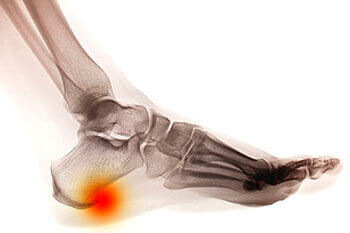 Heel spurs are essentially a hook of bone that forms at the back of the foot, at the base of the ankle. Heel spurs are also described as a calcium deposit that covers the tendons and ligaments of the ankle. Heel spurs cause extreme pain, and can prevent someone from walking or being physically active at a normal level.
Heel spurs are essentially a hook of bone that forms at the back of the foot, at the base of the ankle. Heel spurs are also described as a calcium deposit that covers the tendons and ligaments of the ankle. Heel spurs cause extreme pain, and can prevent someone from walking or being physically active at a normal level.
Heel spurs are more common than people expect them to be. They are most common in people age forty and over, although heel spurs can occur in people younger than forty, and frequently affect athletes or people who are very physically active. Heel spurs are also common in those with poor circulation and degenerative diseases. People who suffer from arthritis may suffer from heel spurs as well.
The symptoms of heel spurs are pain in the lower ankle, which increase when walking.
Treatment of heel spurs can be treated many ways and most often times is very effective. If someone suspects that they have heel spurs, they should contact their physician. Their physician will recommend that they perform an x-ray on the patient's ankles. The physician may also perform a physical on the patient to ensure that there are no underlying conditions, and of course if heel spurs are discovered a physician can recommend treatment options.
Orthopedic shoes are specially designed footwear for people who suffer with foot problems. Orthopedics offer a rubber sole, which cushions the heel and adds comfort to those who suffer from heel spurs. Another simple way to help the pain of heel spurs is to elevate the ankle to diminish the pain. When elevating the ankle, the blood is not focused on that area of the foot and can bring some relief. When all these options have been attempted, and there is still no relief from heel spurs, or the heel spurs return, surgery can be the more dramatic and permanent way to rid patient of heel spurs.
There are less conventional ways that are becoming more popular ways to treat heel spurs. One option would be to use a night splint which reduces the pain caused from heel spurs if worn overnight. Other alternative treatment methods that can be used are ultrasound, or acupressure. There are also other tolls that can be used are heel cups, heel seats, heel pads, arch supports, and insoles.
Exercise is also another powerful tool to help alleviate pain from heel spurs and can help in dealing with some of the symptoms, although exercising incorrectly and forgetting to protect your feet can lead to further pain. It is important to remember the correct way to place the feet when exercising so as to avoid making the problems worse, or creating problems. When exercising to alleviate heel spurs, exercising strengthens muscles around the surrounding tissue around the ankle. Stretching will also keep the tendons around the ankle flexible.